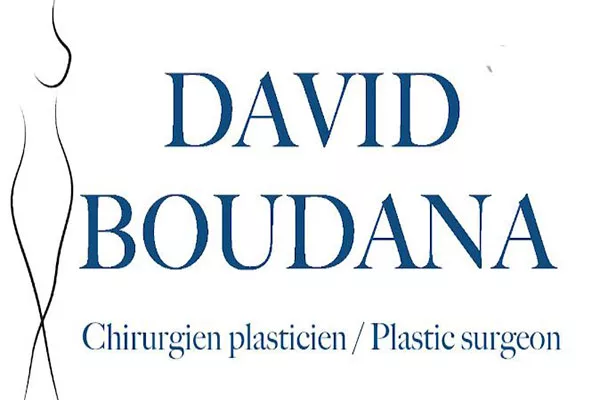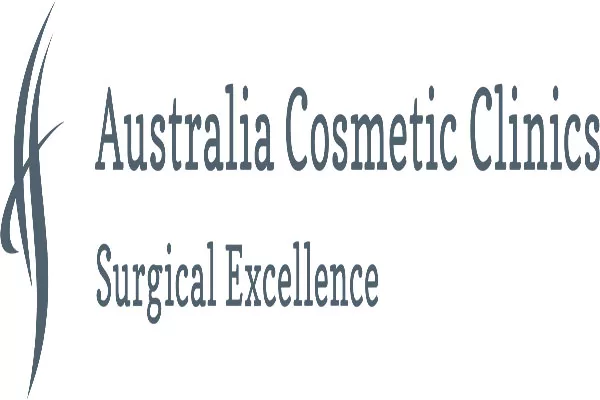Breast implant removal surgery is a medical procedure that involves the removal of breast implants from the body. This procedure is usually performed for a variety of reasons, including dissatisfaction with the size or appearance of the implants, implant failure or complications, and possible health risks associated with the use of breast implants. Recently, one of the major breast implant manufacturers, Mentor Worldwide LLC, issued a voluntary recall of its textured breast implants due to concerns over a link between the implants and a rare form of cancer known as breast implant-associated anaplastic large cell lymphoma (BIA-ALCL). As a result, many women who have received these implants are considering implant removal to reduce their risk of developing this rare cancer. This article will explore breast implant removal due to the possible Mentor recall and provide essential information for women considering this procedure.
Implant Recall by Mentor Worldwide LLC
In November 2020, Mentor Worldwide LLC issued a voluntary recall of its textured breast implants and tissue expanders due to concerns over BIA-ALCL. According to the U.S. Food and Drug Administration (FDA), BIA-ALCL is a rare type of lymphoma that can develop following breast implant surgery. The FDA reported that by the end of September 2020, the agency had received 733 unique cases of BIA-ALCL worldwide, including 36 deaths. Of those cases, 533 were attributed to the use of textured breast implants, and 84% of the reported deaths were associated with the use of textured breast implants. This led the FDA to request that the manufacturer remove these products from the market.
Health Risks Associated with Mentor Textured Breast Implants
The recall of Mentor textured breast implants has raised concerns about health risks associated with these implants. According to the FDA, data suggests that textured implants are more likely to cause BIA-ALCL than smooth implants. Additionally, the FDA states that a type of textured implant made by Mentor, known as the MemoryShape Breast Implant, has been found to have a higher risk of rupture and deflation compared to other implants. It is important to note that not all textured implants are included in the recall, and patients should consult with their surgeon to determine if their specific type of implant is affected.
Reasons for Breast Implant Removal
If you have Mentor textured breast implants and are concerned about the health risks associated with these products, you may be considering breast implant removal surgery. But there are other reasons why women may choose to have their implants removed, including:
- Cosmetic concerns: Women may choose to have their implants removed if they are unhappy with the appearance of their breasts or if they experience undesirable changes to their breasts over time.
- Complications: Breast implants can cause a variety of complications, including infection, implant rupture, and capsular contracture (hardening of the scar tissue that forms around the implant).
- Health concerns: Some women may experience health issues related to their breast implants, such as chronic pain, autoimmune or inflammatory reactions, or interference with breast cancer screening.
- Lifestyle changes: Women may choose to have their implants removed if they experience lifestyle changes, such as weight loss, pregnancy, or breastfeeding, which can affect the size and shape of their breasts.
Breast Implant Removal Procedure
Breast implant removal surgery is performed under general anesthesia and typically takes 1-2 hours to complete. The procedure involves making an incision to remove the implant and any surrounding scar tissue. Depending on the patient’s needs, the surgeon may also perform a breast lift, or mastopexy, to improve the shape and position of the breasts after implant removal. The procedure can be performed on an outpatient basis, although some patients may require an overnight stay in the hospital for observation. The recovery period for breast implant removal surgery is typically 1-2 weeks, and patients may experience bruising, swelling, and discomfort in the days following the procedure. Patients should avoid heavy lifting and strenuous physical activity for several weeks after surgery and follow their surgeon’s post-operative instructions closely to ensure proper healing.
Breast Implant Removal Cost
The cost of breast implant removal surgery can vary depending on a variety of factors, including the surgeon’s experience, geographic location, and the complexity of the procedure. According to the American Society of Plastic Surgeons, the average cost of breast implant removal surgery in the United States is $2,357, not including anesthesia or operating room fees. However, this cost can vary widely depending on the individual patient’s needs and surgical goals. Patients should consult with their surgeon to determine the cost of their specific procedure and whether their insurance plan covers the cost of breast implant removal surgery.
Breast Implant Removal Risks and Complications
As with any surgical procedure, breast implant removal comes with risks and potential complications. These can include:
- Infection: Patients may develop an infection at the surgical site, which can be treated with antibiotics or, in more severe cases, may require surgical intervention.
- Hematoma or seroma: Patients may develop a collection of blood or fluid at the surgical site, which can cause swelling and discomfort and may require additional treatment.
- Changes in breast shape: Patients may experience changes in breast shape or size after implant removal, which may require additional procedures to correct.
- Excessive bleeding: Patients may experience excessive bleeding during or after surgery, which can be life-threatening in rare cases.
- Anesthesia risks: Patients may experience complications related to anesthesia, such as allergic reactions or respiratory distress.
- Poor wound healing: Patients may experience slow or poor wound healing, which can increase the risk of infection and scarring.
Patients should discuss these risks with their surgeon before undergoing breast implant removal surgery and carefully follow their surgeon’s post-operative instructions to minimize the risk of complications.
Finding a Surgeon
If you are considering breast implant removal surgery, it is important to find a qualified and experienced plastic surgeon who has performed this procedure before. Some things to consider when choosing a surgeon include:
- Board certification: Look for a surgeon who is board certified by the American Board of Plastic Surgery. This ensures that the surgeon has met rigorous training and education requirements and has passed an exam in the field of plastic surgery.
- Experience: Choose a surgeon who has experience performing breast implant removal surgery and who can provide before and after photos of previous patients.
- Patient reviews: Read online patient reviews to get a sense of the surgeon’s bedside manner, communication skills, and overall patient satisfaction.
- Consultation: Schedule a consultation with the surgeon to discuss your goals for the procedure, ask questions, and get a sense of whether the surgeon is the right fit for you.
By carefully researching and selecting a qualified and experienced surgeon, you can increase your chances of a successful breast implant removal surgery.
Recovery and Aftercare
After breast implant removal surgery, it is important to carefully follow your surgeon’s post-operative instructions to ensure proper healing and minimize the risk of complications. Some tips for recovery and aftercare include:
- Rest: Plan to take a few days off work and avoid heavy lifting and strenuous activity for several weeks after surgery.
- Pain management: Your surgeon may prescribe pain medication to help manage discomfort in the days following surgery.
- Compression garments: Wearing a compression garment or surgical bra can help reduce swelling and promote healing.
- Wound care: Follow your surgeon’s instructions for caring for your surgical incisions, including keeping the area clean and dry.
- Follow-up appointments: Schedule follow-up appointments with your surgeon to monitor your healing progress and ensure that you are recovering as expected.
- Emotional support: Breast implant removal surgery can be an emotional experience, and it is important to seek emotional support from friends, family, or a mental health professional if you need it.
By following these tips and working closely with your surgeon, you can ensure a smooth and successful recovery from breast implant removal surgery.
Conclusion
Breast implant removal surgery is a medical procedure that involves the removal of breast implants from the body. Women who have received Mentor textured breast implants may be considering implant removal due to the recent recall by the manufacturer, which cites a link between these products and a rare form of cancer known as BIA-ALCL. In addition to this, women may opt for breast implant removal surgery for a variety of other reasons, including cosmetic concerns, implant complications, health concerns, and lifestyle changes. The surgical procedure involves making an incision to remove the implant and any surrounding scar tissue, and may also include a breast lift to improve the shape and position of the breasts. While breast implant removal surgery comes with risks and potential complications, carefully following your surgeon’s post-operative instructions and choosing a qualified and experienced plastic surgeon can help minimize these risks and ensure a smooth recovery.
References:
1. U.S. Food and Drug Administration. (2020). Breast Implants – Certain Labeling Recommendations to Improve Patient Communication: Draft Guidance for Industry and Food and Drug Administration Staff. https://www.fda.gov/regulatory-information/search-fda-guidance-documents/breast-implants-certain-labeling-recommendations-improve-patient-communication-draft-guidance
2. U.S. Food and Drug Administration. (2020). Medical Device Reports of Breast Implant-Associated Anaplastic Large Cell Lymphoma. https://www.fda.gov/medical-devices/breast-implants/medical-device-reports-breast-implant-associated-anaplastic-large-cell-lymphoma
3. American Society of Plastic Surgeons. (2021). Breast Implant Removal. https://www.plasticsurgery.org/cosmetic-procedures/breast-implant-removal
4. American Society of Plastic Surgeons. (2021). Breast Implant Removal Cost. https://www.plasticsurgery.org/cosmetic-procedures/breast-implant-removal/cost
5. American Society of Plastic Surgeons. (2021). Breast Implant Removal Risks and Safety. https://www.plasticsurgery.org/cosmetic-procedures/breast-implant-removal/safety
6. American Society of Plastic Surgeons. (2021). Find a Plastic Surgeon. https://www.plasticsurgery.org/find-a-plastic-surgeon”







